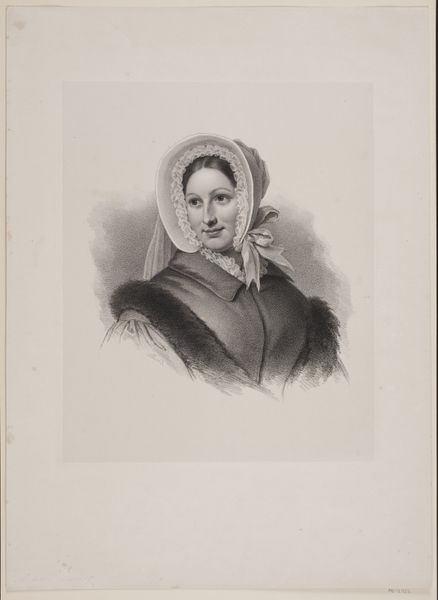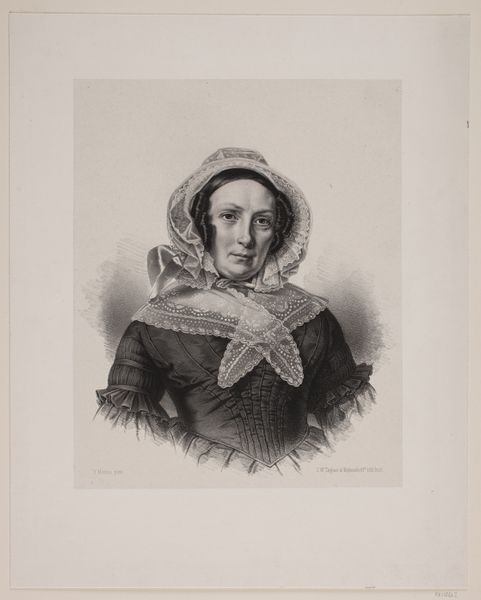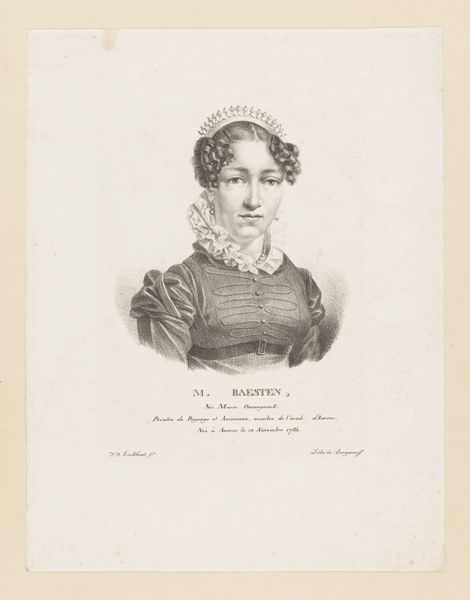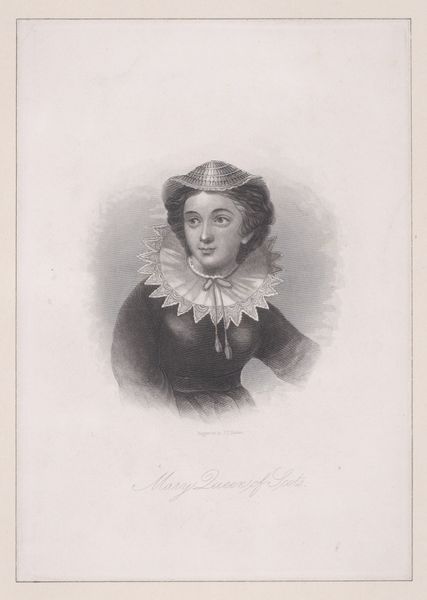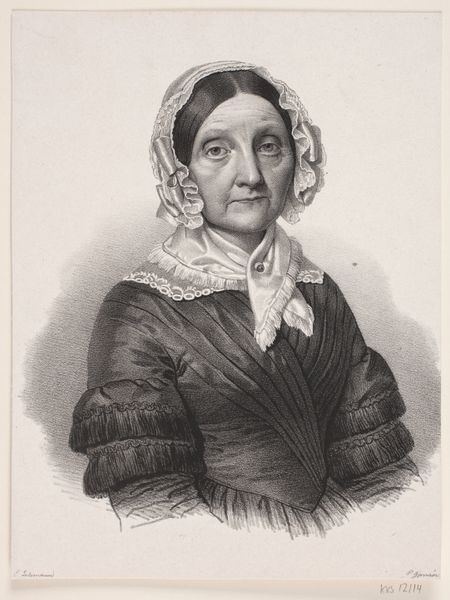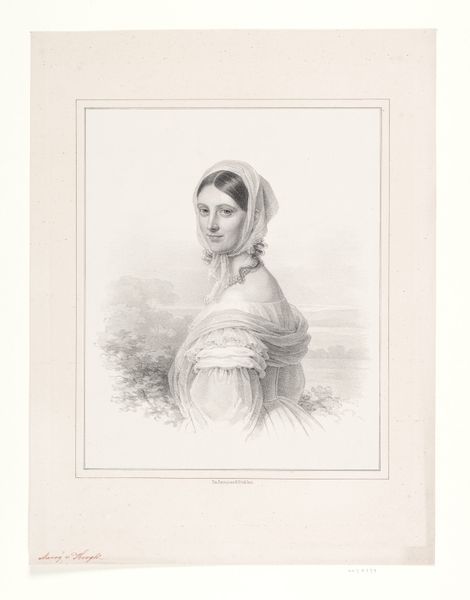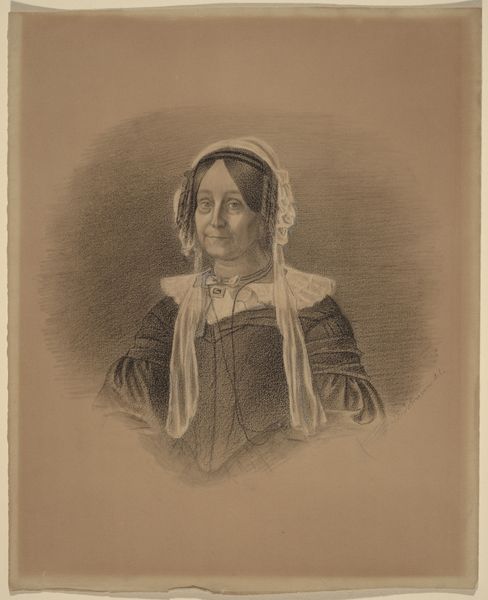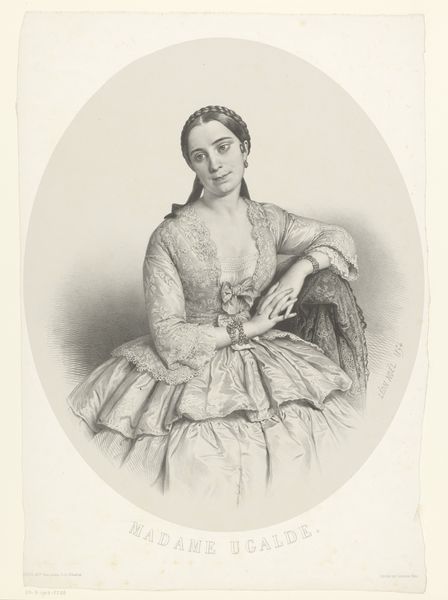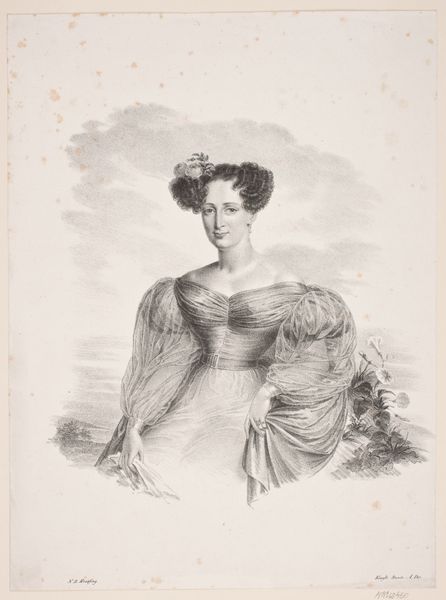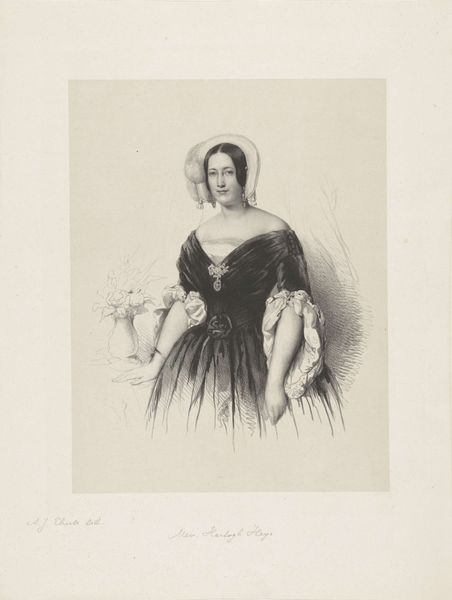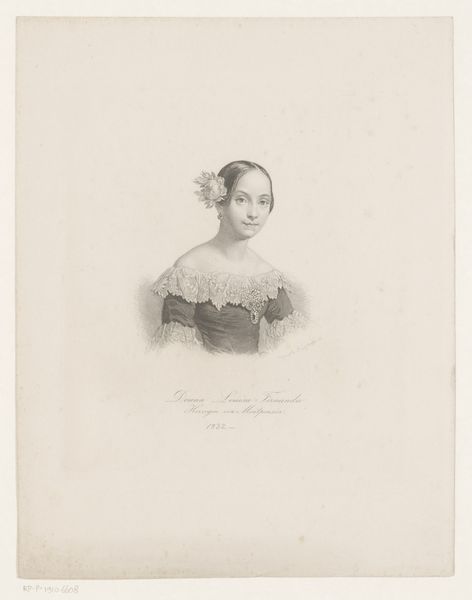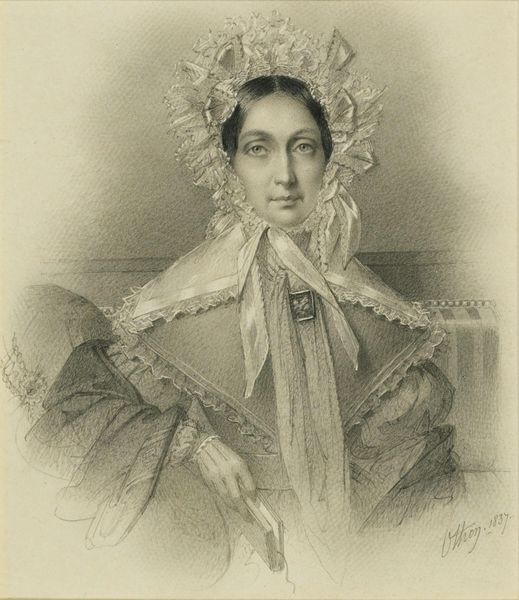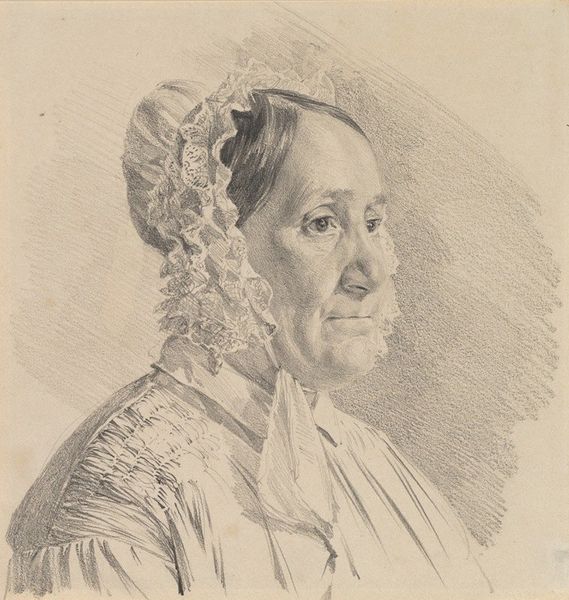
lithograph, print
#
portrait
#
lithograph
# print
#
pencil drawing
#
romanticism
Dimensions: 282 mm (height) x 231 mm (width) (bladmaal)
Editor: This is "Mathilde Winning," a lithograph from the 1830s by Emil Ditlev Bærentzen, currently at the Statens Museum for Kunst. The textures seem so detailed for a print. How would you approach interpreting this work from a formal perspective? Curator: Let us observe the structural elements. The composition relies on a pyramidal arrangement, focusing attention upwards to the subject's face. The use of chiaroscuro is quite effective, notice how light models her face and the lace of her bonnet, contrasting with the darker tones of the fur stole, creating a sense of depth and volume. Editor: Yes, the way the light falls really emphasizes the textures! And the contrast helps define her features. What does this emphasis on light and form suggest? Curator: Considering form alone, the careful modulation of light and shadow serves to idealize the subject. The lithographic technique lends itself to capturing minute details, creating a sense of verisimilitude. Are you drawn to any other formal relationships at play? Editor: The symmetry in her bonnet, maybe? It's almost a perfect frame for her face, softened by the asymmetrical bow at her neck. Curator: Indeed. That subtle asymmetry introduces a dynamic element, preventing the image from becoming too static. Bærentzen's use of line is also critical: notice the delicate, almost fragile lines defining the lace. These visual cues work together to create a complex portrait. Editor: I see. So, it's less about who Mathilde Winning was, and more about how Bærentzen manipulated the visual elements to create a compelling image? Curator: Precisely. By understanding the interplay of these formal components—the use of line, light, shadow, and compositional structure—we gain insight into the artistic intentions and the aesthetic values of the work itself. Editor: Thanks! I'll definitely pay closer attention to these visual relationships in other portraits now. Curator: Indeed, engaging with the materiality of an artwork can enhance our appreciation beyond subject matter.
Comments
No comments
Be the first to comment and join the conversation on the ultimate creative platform.
